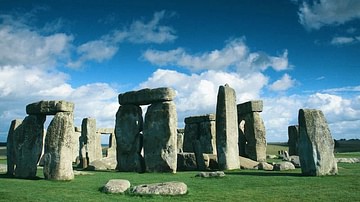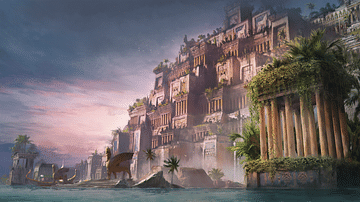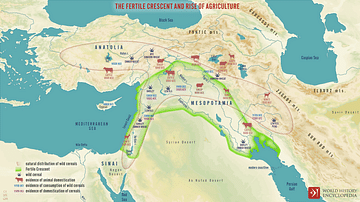Review

| Rating: | |
|---|---|
| Title: | Ancestors: A prehistory of Britain in seven burials |
| Author: | Alice Roberts |
| Audience: | General Public |
| Difficulty: | Medium |
| Publisher: | Simon & Schuster UK |
| Published: | 2021 |
| Pages: | 446 |
'Ancestors: A Prehistory of Britain in Seven Burials,' written by osteoarchaeologist and professor Alice Roberts takes you on a journey through the prehistory of Britain as told by seven burials. This book is both accessible and in-depth, making it perfect for the general archaeology enthusiast as well as those more knowledgeable about archaeology and prehistory more broadly.
Ancestors: A History of Britain in Seven Burials is a focused yet detailed look at the prehistory of Britain, particularly what burials, skeletons, ancient DNA, and human remains can reveal about the long-spanning time from the Palaeolithic right up to the Iron Age. Alice Roberts is an osteoarchaeologist and physical anthropologist at the University of Birmingham, and she brings her expertise in all things skeletal to the fore in this book. Roberts takes the reader on a journey through time and around the United Kingdom, from the Red Lady of Paviland Cave dating to the Palaeolithic and to the Neolithic ‘Tomb of the Otters’, to visit Rushmore Estate. Roberts essentially does archaeology of archaeology and explores the possibilities of modern technologies and ancient DNA.
The author has included so much information in this one book, analysing seven burials from Britain’s prehistory. How she goes far beyond just the skeletons and remains themselves is astonishing. Roberts doesn’t simply explain the remains, the person likely buried, and what we can learn from them, but goes further to consider wider themes such as sex and gender, burial rites and customs, and cultural beliefs. Various modern archaeological techniques are explained and utilised, including isotopic analysis, radiocarbon dating, and ancient DNA and genome testing.
Beyond this, Roberts highlights issues related to each of these burials, including preservation bias and explanations of different taphonomic processes affecting remains and the archaeological record more broadly, confirmation bias and those biases archaeologists of the 19th and 20th centuries brought to their analyses, as well as the simple fact that, often, we can ever truly be sure of many things when it comes to archaeology. Roberts reminds readers of the importance of delving into each potential explanation.
As someone not from Britain, I got a bit lost with the whereabouts of cities, areas, and sites mentioned, but perhaps there are maps in the physical copy that supplement this. Further, the only detraction for listening to the audiobook is not having any sort of imagery to help illustrate points made by Roberts (they are in the physical copy though!), but overall I would recommend the audiobook. Roberts has such a great narration that makes you feel like she’s bringing you along for the ride. Additionally, the book begins at the Crick Institute in May 2019 and spends the first chapter discussing the exciting new ancient DNA research with the sequencing of a thousand ancient genomes. However, because of COVID-19, the project was placed on hold, meaning that the new DNA information was perhaps unavailable for this book - here’s hoping the second book Buried: An Alternative History of the First Millennium in Britain (2022) includes some of what I am sure will be fascinating discoveries!
When reading through this book, the reader not only gets incredible archaeological and historical information about these burials but also gets a firm understanding of the modern context of the remains (i.e. where they are kept, if there is modern research happening on them, etc.), as well as their historical context. This includes who initially found the remains, how they were excavated and handled, and broad contextual information about the find site, and the bridge between their discovery, and this book.
Roberts’ self-aware and detailed discussion and analysis of the burials, the associated grave goods, culture, and history (both ancient and modern) coalesce into a detailed, informative, and enjoyable book that all lovers of prehistory and archaeology should read.
This review was originally posted on Kell-Read.
About the Reviewer
Cite This Work
APA Style
Macquire, K. (2024, February 14). Ancestors: A Prehistory of Britain in Seven Burials. World History Encyclopedia. Retrieved from https://www.worldhistory.org/review/396/ancestors-a-prehistory-of-britain-in-seven-burials/
Chicago Style
Macquire, Kelly. "Ancestors: A Prehistory of Britain in Seven Burials." World History Encyclopedia. Last modified February 14, 2024. https://www.worldhistory.org/review/396/ancestors-a-prehistory-of-britain-in-seven-burials/.
MLA Style
Macquire, Kelly. "Ancestors: A Prehistory of Britain in Seven Burials." World History Encyclopedia. World History Encyclopedia, 14 Feb 2024. Web. 27 Apr 2024.



